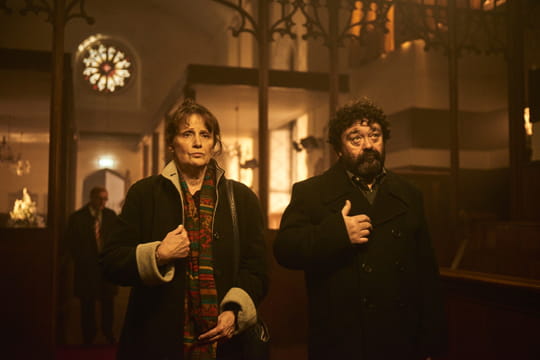Steeltown Murders, a series broadcast on Arte, looks back on the particularly violent rapes and murders of three teenage girls in Wales…
The mini-series Steeltown Murders, scheduled on Arte from October 3, 2024, immerses viewers in the 1970s, in a small working-class town in South Wales, where three teenage girls were brutally raped and murdered. Despite the efforts of the police at the time, the investigation failed to find the culprit. But thirty years later, two former police officers, still haunted by the case, decide to relaunch the investigation, helped by a volunteer. Thanks to the use of scientific advances, notably DNA, they will succeed in bringing to a conclusion a case which had left the community in mourning and the investigators in doubt.
At a time when “true crime” programs are proliferating on screens and streaming platforms, Steeltown Murders is no exception. The series is indeed inspired by a true story which marked the legal history of the United Kingdom and Wales in particular. Produced by the Welshman Marc Evans, it highlights how the use of genetics set a precedent a few years ago in the outcome of stalled legal cases, marking a turning point in criminal investigation methods. Spoiler alert…
How the killer, Joseph Kappen, was found
Steeltown Murders looks back on the way in which Joseph Kappen, nicknamed “the Saturday night strangler”, was confused for the rapes and murders of Sandra Newton on July 14, 1973, then of Geraldine Hughes and Pauline Floyd, a little more than two months later, on September 16 of the same year, in Port Talbot, south Wales. It took detectives nearly 30 years to catch the killer thanks to advances in technology. Joseph Kappen would only become Wales’ first documented serial killer in 2001.
Joseph Kappen’s modus operandi was also dissected: the three women, aged 16, were lured into his vehicle on a Saturday evening. After raping them, the criminal strangled them. Despite this, the death of Sandra Newton will not immediately be linked to those of Hughes and Floyd. Failing for about a year, the investigators reduced their investigations in mid-1974, due to lack of progress. Among the difficulties: the make of the killer’s car, an Austin 1100, so common at the time that 10,000 people in the region used the model. Questioned from the start of the case, Kappen claimed that his vehicle was not roadworthy and was wrongly dismissed as a suspect.
The car will, however, be recorded by the police as being on the road in the days following the murder of Hughes and Floyd, but without a computerized cross-checking system, this decisive evidence will go unnoticed by the detectives. Kappen also claimed he was in Neath Fair, a remote location from the murders and his wife will also give him a false alibi.
The investigation would only be reopened at the end of the 1990s, with progress in DNA testing finally making it possible to establish a profile of the killer. Despite this, no correspondence will be established with any person arrested or charged. It wasn’t until 2001 that DNA testing was able to identify Newton’s killer as the same person who killed Hughes and Floyd. That same year, Kappen would be identified after police conducted a DNA search to find matches to possible living descendants of the killer. It is his son, Paul, a car thief whose DNA was already in the file, who will help to confuse him.
Trauma in Wales
Joseph Kappen will never be punished. He died in 1990 from lung cancer. In 2002 his body was exhumed from Goytre Cemetery, on the outskirts of Port Talbot, and forensic tests proved he was the killer. After the investigation’s findings, Kappen’s ex-wife Christine Powell, who had previously maintained Kappen’s innocence, said they were “all deeply shocked by these revelations.” Joseph Kappen is also suspected of having committed a fourth murder, in February 1976.
The series also highlights the emotional repercussions of this tragedy in the country, from the trauma suffered by the families of the victims, from the pain of not having been able to bury their daughters to the impossibility of turning the page for investigators deeply affected until in their personal lives, adding a human dimension to this legal thriller. But be careful, if the case is authentic, specific details about the protagonists and certain events may have been fictionalized for the purposes of the narrative.
